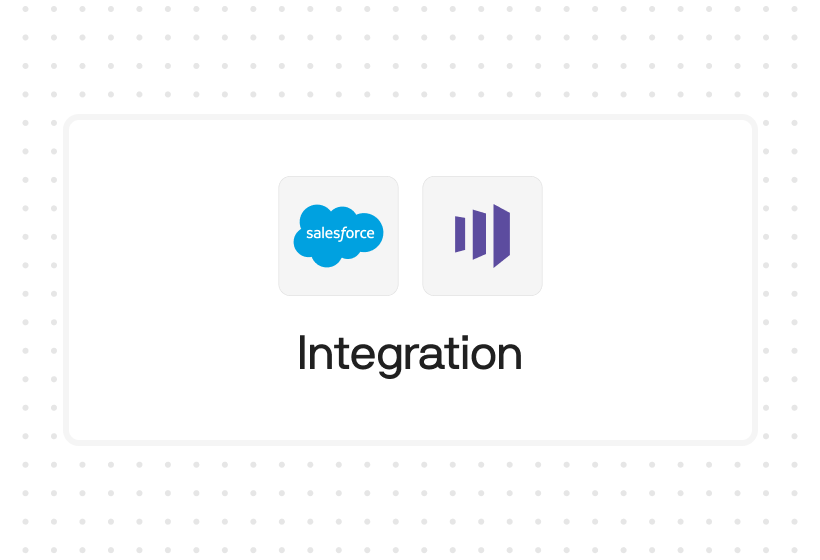Try Default

See how revenue teams automate revenue operations with Default.

Key Takeaways
Ideal customer profiles (ICPs) are a critical part of every marketing strategy. You can’t write copy, launch outbound campaigns, or target audiences unless you first know who you’re talking to. But too often, ICPs live on a slide deck without being fully integrated into tactical marketing processes.
What’s more, many marketers are too simplistic in how they think about and deploy their ICPs. They don’t take into account their nuances and complexities. This can lead to under- or over-qualifying leads, which overwhelms sellers with poor follow-ups and results in missed opportunities with good prospects.
Let’s walk through how your ICPs function in practice, then go a step further and illustrate how to manage them within your inbound lead flows using Default.
Why are ideal customer profiles (ICPs) critical to inbound marketing?
Most articles on ideal customer profiles (ICPs) address the concept on a surface level. It usually goes something like this:
In marketing, your messaging, content, and stated positioning determines who you attract to your website. This is in contrast to ads, where you choose the audience first, then the message second. Unless you have a firm grasp on who your ideal customer profile (ICP) is, then you won’t know what to write, post, or comment.
While that’s a decent answer, it only tells half the story. Building an ICP is far from easy, and treating it too simplistically can result in:
- Poor qualification, usually resulting from too little detail (e.g. “we sell to software companies” vs. “we sell to marketing leaders inside Series A SaaS startups”) — this applies to both companies and contacts
- Wasted resources, due to focusing on the wrong attributes when defining their ICPs (e.g. age, gender, hobbies, interests, family life), rather than focusing on attributes relevant to whether or not they’ll buy (e.g. company size, budget, team size, decision-making power)
- Addressing the wrong internal contact by failing to collect data not only on companies, but contacts within companies, and fine-tuning your various ICPs to match; this also presents problems when routing leads to the appropriate contact
- Undue exposure to business risk, due to treating ICPs as static, rather than changing as they receive new information and pivoting
What do most companies get wrong about ideal customer profiles (ICPs)?
All of this comes down to a fundamental problem: marketing leaders often treat their ICPs as strategic constructs. If they apply them tactically, they’re used to inform messaging, positioning, website content, and that’s about it.
While ICP-driven messaging is a great Step One, maximizing your inbound success requires you to go a step further. Attracting an audience is one thing. Leveraging and converting that audience to drive business outcomes requires you to:
- Set up forms and lead capture opportunities not only on high-traffic pages, but pages where the messaging is more likely to drive the reader to conversion
- Enrich captured data to better understand and segment the lead
- Route the lead to the correct next step and point of contact (e.g. SDR, account manager, partnership manager)
- Learn from the interaction with the ICP, and use that to refine the marketing strategy, including the ICP definition itself
To achieve all of this, your ICP has to inform and drive every aspect of your business—including and especially your automated inbound processes.
How to integrate ideal customer profiles (ICPs) into your inbound lead flows
The problem most businesses face with tactical deployment of ICPs is that many existing inbound marketing tools aren’t set up to handle the complexities of ICPs in conversion, qualification, routing, and scheduling.
When we built Default, our goal was making it easier than ever to incorporate ICPs into every part of the inbound process: from form conversion to scheduling to routing. Your messaging may be tailored to attract your ICP, but we’re giving you the systems and processes to make that happen.
Here are some specific ways that Default empowers a nuanced, detailed, data-driven approach to ICPs in your inbound lead flows.
Data enrichment
The data you capture directly is just the tip of the iceberg. Default automatically enriches captured data with information from third-party sources as well as your CRM.
Not only does this help with lead qualification (more on that below), but also your conversion rates. By limiting the number of options on your form, you increase the likelihood of conversion—then use enrichment data to get a bunch more insights.

Qualifying criteria
ICPs are rarely identified by a single demographic, or even a handful of demographics. Default enables you to automatically stack hundreds of demographics—both individual and company—so you’re only qualifying the leads that are actually a good fit for your business. We can cast the net as wide or narrow as you like.
Our data enrichment helps make this demographic stacking as robust as possible. If there’s a particular demographic that’s not in your CRM or captured on the form, we can pull it in.
.svg)
Automated ICP-based qualification, scheduling, and routing
Default captures and enriches data for each conversion, enabling smart qualification, scheduling, and routing to happen automatically. With that information, Default can determine in seconds:
- Whether a converted lead aligns with an ICP (or is an outlier, more on that later)
- What the intention of that particular lead is (Did they convert on a product page? Pricing page? Blog post?)
- Where to route the lead depending on where they fit within a certain territory or industry, as well as where the individual contact sits within the company
Default can then automatically schedule a meeting with the appropriate sales rep, reducing the number of touchpoints necessary to get from form submission to meeting scheduled. This is especially important for organizations targeting high-level, decision-maker ICPs or in highly competitive markets.
.svg)
Outlier ICPs
Most companies have a set number of ICPs, but there are going to be exceptions to the rule. For instance, you may sell only to companies that have passed Series C funding rounds. However, a Series A startup may be in a particularly good niche and backed by a reputable VC firm. You’d want the opportunity to at least see if they’re worth talking to.
Default ensures that you not only capture leads that align with your standard ICPs, but also outliers that could contain great business opportunities. The platform enables flexibility in ICP filtering, so you don’t over-automate to the point of missing out on key opportunities.
Final thoughts on ideal customer profiles (ICPs)
At the end of the day, if your ideal customer profile isn’t informing and driving every part of your marketing processes, then it’s a wasted opportunity. Often companies don’t fully use their ICPs because they’re overly simplified, and don’t thoroughly reflect the realities of the markets they serve.
Additionally, some companies don’t fully leverage their ICPs because they don’t have the requisite tooling to handle the level of complexity this brings. You’ve already caught a glimpse of how Default is built to handle this level of sophistication.
Now, see it for yourself: schedule a demo with Default today.
Conclusion

Building Default to help the next 10 million B2B companies grow from zero to IPO better, faster, and cheaper.
Accelerate your growth with Default.
Revamp inbound with easier routing, actionable intent, and faster scheduling














.png)

























